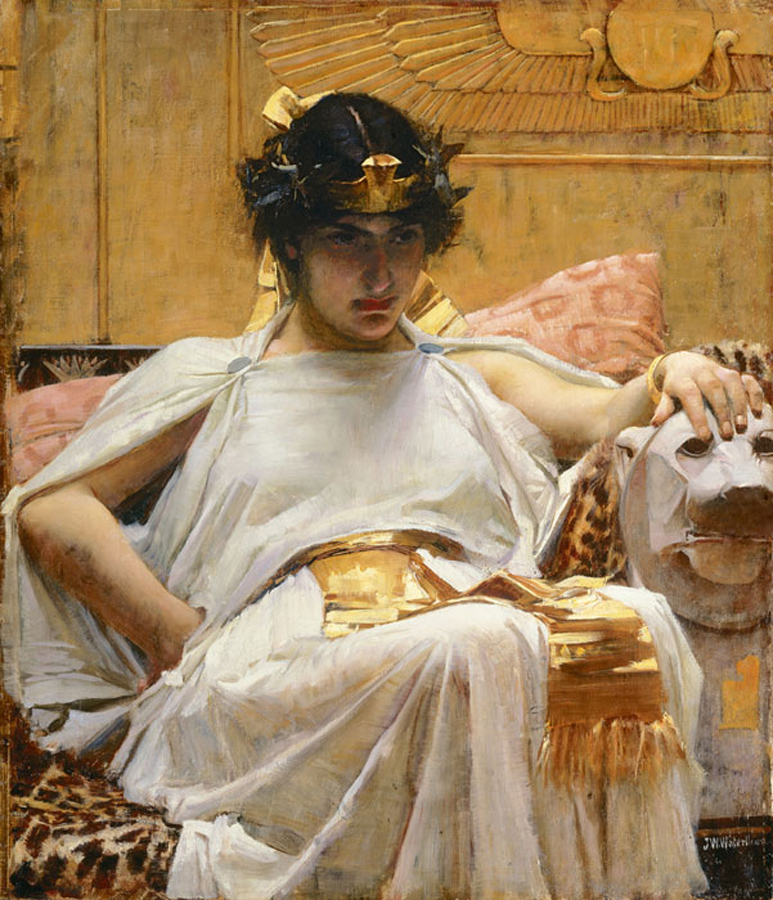Cleopatra is a painting by the English artist John William WaterhouseEnglish artist known primarily for his depictions of women set in scenes from myth, legend or poetry. He is the best known of that group of artists who from the 1880s revived the literary themes favoured by the Pre-Raphaelites. (1849–1917). Completed in 1888, it depicts the last pharaoh of Egypt as a femme fatale lounging on a leopard skin, glancing up under a gold diadem, “her sultry gaze … as seductive and potentially poisonous as the asp that bit her”.[1][a]Following Cleopatra’s suicide in 30 BCE, Egypt became a province of Rome.
Like many of Waterhouses’s later works, the picture contains only a single – almost invariably female – figure,[2] a “dark, dangerous woman”, a popular theme in late 19th-century art and literature.[3]
The painting was commissioned in 1887 by The GraphicBritish weekly illustrated newspaper published from 1869 to 1932., a London illustrated weekly newspaper, as one of an exhibit of twenty-one paintings of Shakespearian heroines. It had not been seen in public since 1889, and had been presumed lost after it was bought by a London dealer for 90 guineas that year, until it was discovered in a log cabin in the Rocky Mountains of Colorado in 2003.[4][b]Ninety guineas in 1889 is equivalent to about £12,400 as at 2022, calculated using the retail price index.[5]
Cleopatra was submitted for auction at Christie’s in London in 2005 with an estimated price of £200,000 – £300,000, but failed to reach its reserve.[6]
Notes
| a | Following Cleopatra’s suicide in 30 BCE, Egypt became a province of Rome. |
|---|---|
| b | Ninety guineas in 1889 is equivalent to about £12,400 as at 2022, calculated using the retail price index.[5] |

